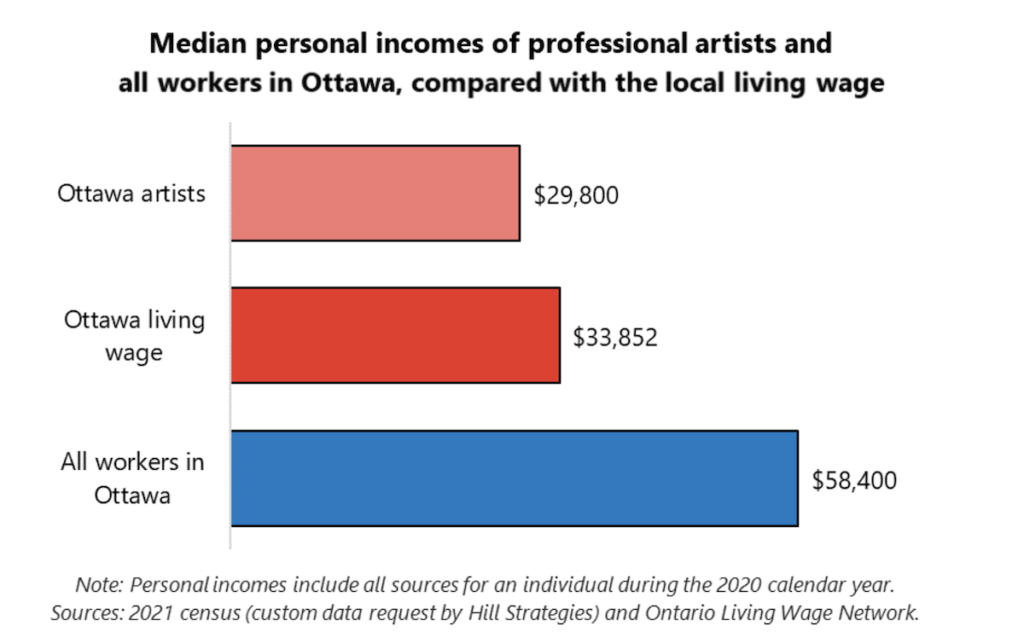
More than half of Ottawans working in creative professions earn below the local living wage despite having higher education levels than other Ottawa workers, according to an article by Hill Strategies.
Released by the arts research firm in April, the article highlights the less-than picture perfect financial reality of many professional artists in Ottawa.
Acknowledging the challenges of the profession, Carleton University artistic alumni based in Ottawa are working to ensure the artistic industry stays accessible for upcoming creatives.

“Artists living below the living wage does not sound unique to Ottawa or any period of time. It sounds like being an artist,” said Kalle Mattson, a musician currently teaching singing and songwriting at Carleton as well as directing the university’s Singer-Songwriter Ensemble.
After graduating from Carleton in 2012, Mattson spent a decade as a professional artist before returning to his alma mater as an instructor.
While working as an artist, Mattson experienced everything the industry had to offer, from Juno nominations to spending 270 days on the road in one year.
According to Mattson, many aspects of the music industry have significantly changed in the past decade.
“Press used to be a lot bigger for artists, there were more outlets that wrote about music more critically and more prominently,” Mattson said. “Now, it’s sort of been replaced by an algorithm, which is not worse or better, it’s just different.”
Mattson said he encounters many students who are concerned about navigating the industry post-graduation. However, he believes a technical post-secondary education lays the foundation for learning more about the business.
“Post-secondary music education prepares you to play music very well and how to get very good at your craft,” Mattson said. “As you get more successful, you spend less time on your craft and more time finding ways to make money so you can keep doing your craft.”
John Higney, Carleton’s supervisor of performance studies, ensembles and masterclasses, said the music industry is “a brave new world” of economic models.
While in the past, artists generated income based on record and ticket sales, Higney highlighted a shift toward streaming and social media.
“There are a lot of opportunities in streaming, but if you are not signed, it is a lot of work for one person to navigate,” Higney said.
Although the industry is seeing a shift, Higney said Carleton’s music programs are changing with it.
“We are listening and we’re watching to see what’s happening in the world and tweaking things quite substantially,” Higney said.
The Foundation Assisting Canadian Talent on Recordings, the Ontario Arts Council and the Canadian Starmaker Fund have programs set in place to support musical artists in various stages of their careers.
Rebbeca Basciano, chief curator of the Ottawa Art Gallery (OAG) and a Carleton master of art history alumnus, said the OAG is considered an “exemplar” by the Canadian Artists Representation (CARFAC), an organization which strives for fair pay among artists.
According to Basciano, the OAG helps artists who are working with the gallery every step of the way.
“We pay artists the recommended CARFAC rates,” Basciano wrote in a statement to the Charlatan. “We provide artists with contracts that include a payment schedule and provide reproduction agreements that give artists the option to allow some images to be published for promotional purposes in association with the exhibition.”
With art and architecture history alumni filling museums across Canada, and musicians Angelique Francis and Amy Brandon representing Carleton at the 2024 Junos, there is no shortage of creative success from Carleton graduates who are hopeful to leave their mark.
Featured image by Justin Ball.





